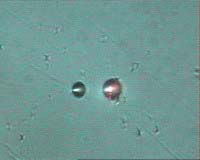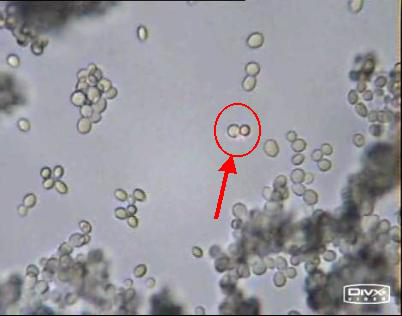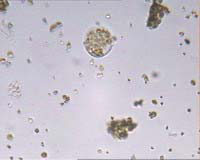The principle of optical tweezers is: when a laser beam is tightly focused to act on the micro-particle, the photon can transfer its momentum to the particle which thus achieves the weak force, and the composition of forces added to the micro-particle in the converged optical field points to the center of the optical field. Therefore, no matter where the micro-particle is in the optical field, the gradient force in this field can firmly trap it within the optical field, i.e., the focus spot of the laser beam. When the laser beam moves, it brings the movement of the micro-particle simultaneously and makes the precise control on the micro-particle possible. Because it uses laser beam to realize the non-mechanical-touch capture, no mechanical damage occur on the micro-particle. Also because all the mechanical parts of the optical tweezers are far away from the captured object, it is a remote-control operation, no mechanical parts affect the particle’s surroundings. Therefore the optical tweezers is especially applicable to the research on the live bio-particles. The trap of optical tweezers over micro-particles is not rigid but flexible like a spring, which can real-time measure the interaction forces among the micro-particles during the operation process. Thus the optical tweezers can also act as a force probe during this process or a force sensor. All these characteristics not only make the optical tweezers as a mechanical hand able to control micro-particles but also an ideal means of investigating static and dynamic mechanics of micro-particles.
?? Description of the product:Our optical tweezers product incorporates laser technology, digital technology and micro-imaging system. Infrared laser (808nm) or red laser (650nm) is focused on the micro-object and traps it. The micro-manipulation process can be monitored and recorded into a PC computer via micro-imaging system and CCD camera. The laser beam can be focused to a spot with minimal diameter of 1 μm. The size of ordinary biological cells is about few micrometer, so this system can satisfy the requirement of most biological and physical experiments.
Figure 1 is the photo of the optical tweezers. It is composed of a semiconductor laser, a microscope, adaptive optical and mechanic components, readout light, 2-D precision sample stage, CCD camera, and a PC computer. The sample is placed on the 2-D precision sample stage. The micro-object is imaged onto the CCD sensor target via the objective. The image is captured by an image card and transferred into the PC computer. The operator can observe the sample and the operating process on the PC monitor, which can also be snapped as photos or recorded as videos into the computer for post-treatment. The laser beam is directed into the microscope via a focusing optical module, which makes the laser beam accurately focused on the sample. By moving the 2-D precision sample stage the micro-object trapped by the laser beam can be freely moved to anywhere you want.

Fig. 1 Photo of the Optical tweezers
The following are some video examples for demonstration of the optical tweezers in capturing and operating PMMA beads, yeast cell and chloroplast organelles (can be download from the website: http://www.opticaltweezers.net )

Video 1: the demonstration of trapping and moving PMMA beads.

Video 2: the demonstration of trapping and moving yeast cell.

Video 3: the demonstration of capturing and operating chloroplast organelles.
?? Features of the product:
Compared with similar products on the market, our product has the following advantages:
1. The power of the 808nm semiconductor laser used in this system is 300mW (650nm 70mW), much higher than other products. Thus it can provide sufficient trapping force. As benefit, even using low magnification objectives (25X-40X), it can trap and move the particle, making the operation much easier.
2. The moving precision of the XY sample stage is 1μm (scaled), much higher than other products. Therefore accurate capture and movement of the target particles can be realized.
3. The system is designed as combination of independent optical modules. The optical configuration is clear and easy to be understood. It is very applicable for teaching and experiment for undergraduates and graduates students.
4. Benefiting from the independent optical modules design, the system is very easy to be updated, refit and extended to other functions. For example, multiple laser beams can be coupled into the microscope to act on the target particle, which is useful in scientific research.
5. Reflecting illumination can be added to observe opaque sample such as metal, plastic and semiconductor.
6. Femtosecond laser scissors function can be added to micro-surgery on the optical trapped particles.
?? Application fields:
Science and research field:
In biology science, this system can be applied to study the static and dynamic mechanical characteristics of cells and macromolecules. It can realize fine operation on biomolecules, identify the different features and adjust life course at molecule level. What’s more, it can carry out biological organic assembly.
In colloid physics, it can be applied to study the interaction among small particles.
In nanotechnology research, optical tweezers can be used to drive micro-mechanic components and measure mechanical parameters of micro-system.
This system can be used as not only an optical tweezers but also a platform for investigation of interactions between laser and small particles. By extending its functions, it can be used for studying the material particle variation process with different wavelength and different pulse duration of the laser.
??Education field:
At present time, the laser experiments for physics graduate and undergraduate students are almost based on the electromagnetic effect and thermal effect of the laser. The college physics books have pointed out long before that the photon has momentum. The optical tweezers is produced just on this mechanical effect of light. The optical tweezers experiment can impel students to further understand the inherent essence of light.
By doing the optical tweezers experiment, students can comprehend the construction and principles of the optical microscope, the working principle of CCD, the influence of the different luminance sources on the microscopic resolution, the concept of diffraction limitation, the relationship among individual conjugate areas in optical microscope. All these trainings will enrich students’ theoretical and practical knowledge in optics.
Optical tweezers is a new tool for investigation of life science with optoelectronic technology. Many biological and physical phenomena are involved in the experiment. This optical-mechanical-electrical integrated system can extensively broaden the students’ knowledge and lay a solid foundation for their future development.


